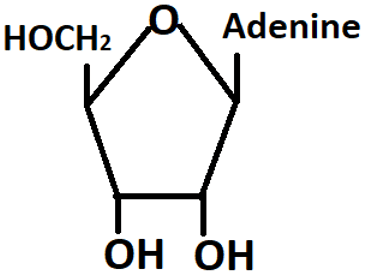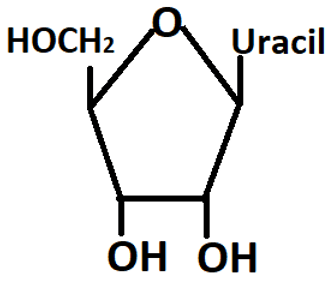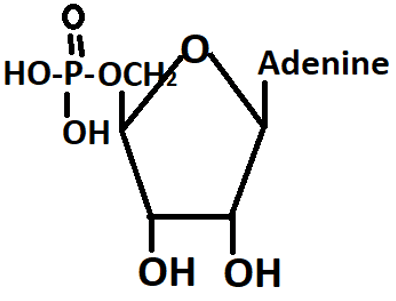This set of Class 11 Biology Chapter 9 Multiple Choice Questions & Answers (MCQs) focuses on “Biomolecules – Nuclei Acids”.
1. Which of these is present in the acid insoluble fraction of living tissue?
a) ascorbic acid
b) Magnesium
c) Riboflavin
d) DNA
View Answer
Explanation: DNA is present in the acid insoluble fraction. It is a macromolecule. Riboflavin or vitamin B2, magnesium and ascorbic acid or vitamin C are present in the acid soluble fraction of living tissue.
2. Nucleic acids are _____
a) polypeptides
b) polyimides
c) polynucleotides
d) polysaccharides
View Answer
Explanation: Nucleic acids are chains of nucleotides. Thus, they are called polynucleotides. Each nucleotide contains a pentose sugar, a phosphate group and a nitrogenous base. Nucleic acids are the genetic material.
3. Which of these is not a part of the macromolecular fraction of a cell?
a) Polynucleotides
b) Polysaccharides
c) Riboflavin
d) Polypeptides
View Answer
Explanation: The macromolecular fraction of the cell consists of polynucleotides or nucleic acid, polypeptides and polysaccharides which are carbohydrates. All of their molecular wights are above 10,000 Da.
4. What is the building block of nucleic acids?
a) Nucleotide
b) Nucleoside
c) Nucleosome
d) Nucleoprotein
View Answer
Explanation: The building blocks of nucleic acids are nucleotides. Each nucleotide consists of a pentose sugar, a phosphate group and a nitrogenous base such as adenine, guanine, cytosine, thymine or uracil.
5. How many distinct components does each nucleotide contain?
a) 2
b) 3
c) 1
d) 4
View Answer
Explanation: Each nucleotide consists of a pentose sugar, a phosphate group and a nitrogenous base such as adenine, guanine, cytosine, thymine or uracil. They are the building blocks of nucleic acids which are the genetic material.
6. How many distinct components does each nucleoside contain?
a) 3
b) 1
c) 2
d) 4
View Answer
Explanation: Each nucleoside consists of a pentose sugar and a nitrogenous base such as adenine, guanine, cytosine, thymine or uracil. When a phosphate group attaches to the nucleoside, it forms a nucleotide.
7. Which of these components of nucleotides is heterocyclic?
a) Adenine
b) Phosphoric acid
c) Monosaccharide
d) Phosphate
View Answer
Explanation: Nucleotides are the building blocks of nucleic acids. Each nucleotide contains a phosphate group, a nitrogenous base and a pentose sugar. The nitrogenous bases are heterocyclic in nature.
8. Which monosaccharide is present in nucleic acid?
a) Fructose
b) Galactose
c) Glucose
d) Ribose
View Answer
Explanation: Glucose, fructose, galactose and ribose are all monosaccharides. The monosaccharide contained in nucleic acid is ribose and deoxyribose. They are pentose sugars. Ribose sugar is present in RNA while deoxyribose sugar is present in DNA.
9. The phosphate groups present in nucleotides are related to ______
a) pyrophosphoric acid
b) phosphorous acid
c) phosphoric acid
d) metaphosphoric acid
View Answer
Explanation: The phosphate groups present in nucleotides and hence, nucleic acids are related to phosphoric acid. Each nucleotide contains a phosphate group, a nitrogenous base and a pentose sugar.
10. The distinct components of nucleotides are phosphate group, heterocyclic compound and polysaccharide. True or false?
a) True
b) False
View Answer
Explanation: Nucleotides are the building blocks of nucleic acids. Each nucleotide contains a phosphate group, a nitrogenous base which is a heterocyclic compound and a pentose sugar, which is a monosaccharide.
11. Which of these is a substituted purine?
a) Cytosine
b) Thymine
c) Uracil
d) Guanine
View Answer
Explanation: Adenine and guanine are the substituted purines. The substituted pyrimidines are cytosine, thymine and uracil. They are the nitrogenous bases present in nucleic acids along with pentose sugar and phosphate group.
12. What type of sugar does DNA contain?
a) Ribose
b) 3’ deoxyribose
c) 2’ deoxyribose
d) 5’ deoxyribose
View Answer
Explanation: DNA stands for deoxyribonucleic acid. Hence, it contains deoxyribose sugar. It is a ribose sugar molecule with an oxygen atom removed from the second carbon. Hence, it is a 2’ deoxyribose sugar.
13. Identify the compound.

a) Adenine
b) Adenylic acid
c) Adenosine
d) Adenylyl cyclase
View Answer
Explanation: The given structure contains a pentose sugar and the nitrogenous base adenine attached to it. There is no phosphate group present in the structure. Hence, it is the nucleoside adenosine.
14. Identify the compound.

a) Uridine
b) Uracil
c) Uridine monophosphate
d) Uridylic acid
View Answer
Explanation: The given structure contains a pentose sugar and the nitrogenous base uracil attached to it. There is no phosphate group present in the structure. Hence, it is the nucleoside uridine.
15. Identify the compound.

a) Adenine
b) Adenylic acid
c) Adenosine
d) Adenylyl cyclase
View Answer
Explanation: The given structure contains a phosphate group, pentose sugar and the nitrogenous base adenine (purine) attached to it. Hence, it is the nucleotide adenylic acid. It is an ester of phosphoric acid and the nucleoside adenosine.
Sanfoundry Global Education & Learning Series – Biology – Class 11.
To practice all chapters and topics of class 11 Biology, here is complete set of 1000+ Multiple Choice Questions and Answers.
If you find a mistake in question / option / answer, kindly take a screenshot and email to [email protected]
- Practice Class 12 - Biology MCQs
- Practice Class 11 - Mathematics MCQs
- Practice Class 11 - Physics MCQs
- Check Class 11 - Books
- Practice Class 11 - Chemistry MCQs
